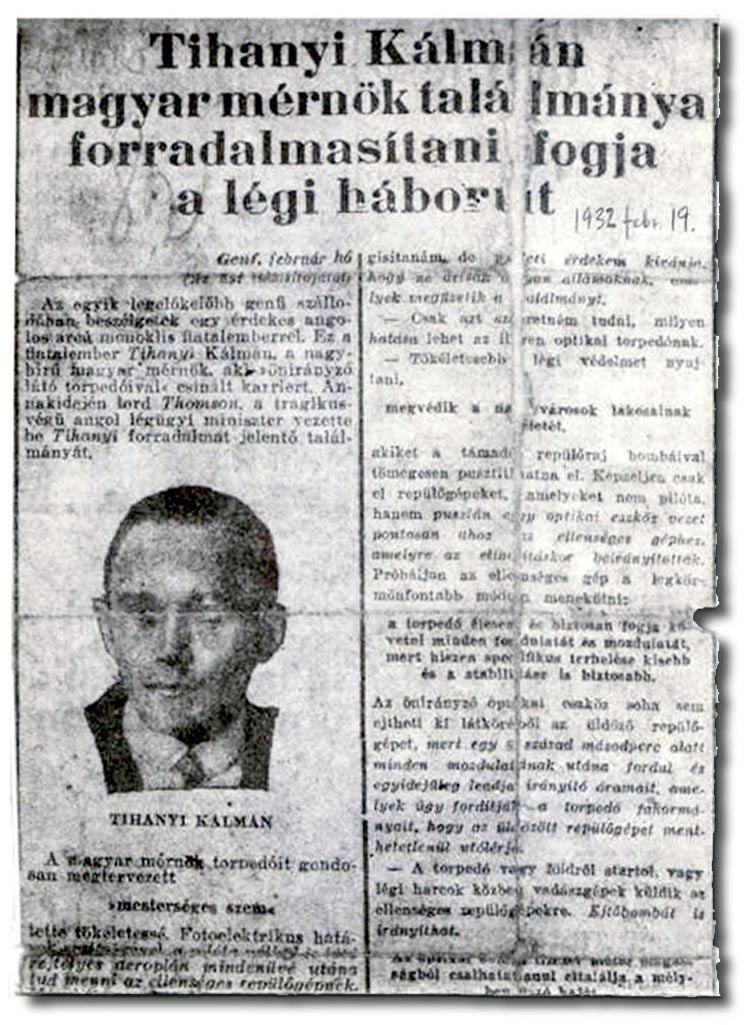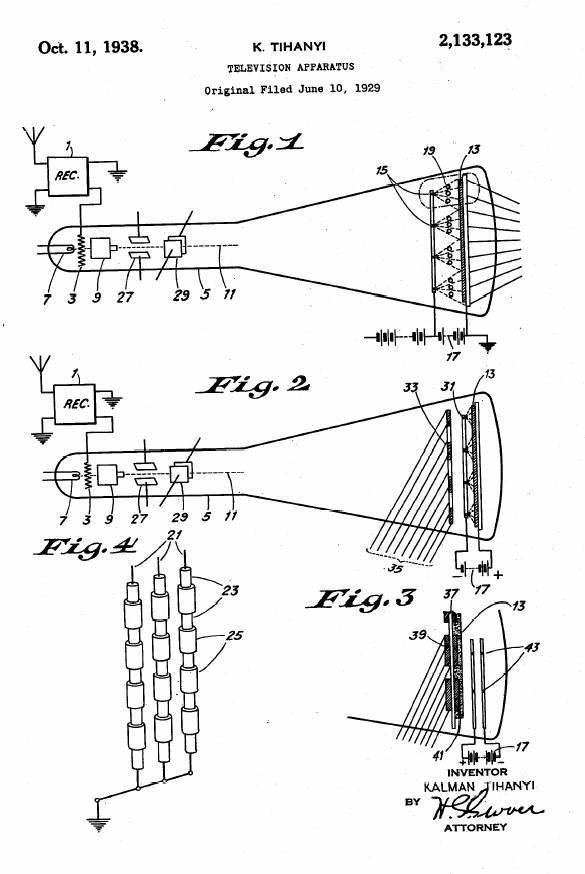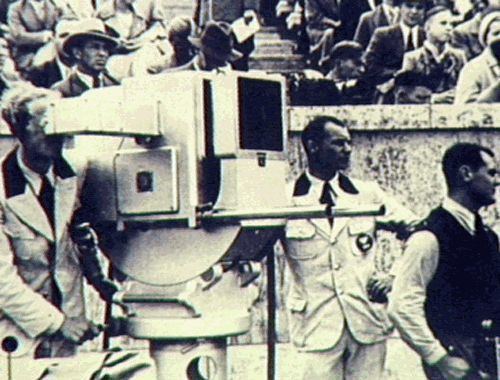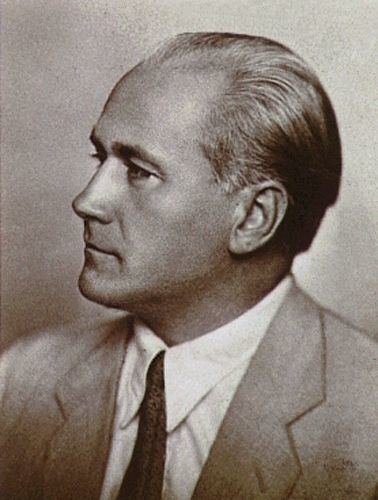Nationality Hungarian Name Kalman Tihanyi | Role Physicist | |
 | ||
Residence Hungary, England, Italy Known for Electronic Television, Plasma Display, Infrared camera, Optically controlled automatic pilotless aircraft Died February 26, 1947, Budapest, Hungary Education Budapest University of Technology and Economics Fields Invention, Engineer, Physicist | ||
Kálmán Tihanyi (28 April 1897, Zbehy (Üzbég) – 26 February 1947, Budapest), was a Hungarian physicist, electrical engineer and inventor. One of the early pioneers of electronic television, he made significant contributions to the development of cathode ray tubes (CRTs), which were bought and further developed by the Radio Corporation of America (later RCA), and German companies Loewe and Fernseh AG. He invented and designed the world's first automatic pilotless aircraft in Great Britain.
Contents

Career

Born in Üzbég, Kingdom of Hungary (since 1920 Zbehy, Slovakia), Tihanyi studied electrical engineering and physics in Preßburg (today Bratislava) and Budapest.

Tihanyi called his fully electronic television system "Radioskop". His patent application contained 42 pages detailing its design and mass production. It is recorded in UNESCO's Memory of the World Programme. Though it bears certain similarities to earlier proposals employing a cathode ray tube (CRT) for both transmitter and receiver, Tihanyi's system represented a radical departure. Like the final, improved version Tihanyi would patent in 1928, it embodied an entirely new concept in design and operation, building upon a technology that would become known as the "storage principle". This technology involves the maintenance of photoemission from the light-sensitive layer of the detector tube between scans. By this means, accumulation of charges would take place and the "latent electric picture" would be stored. Tihanyi filed two separate patent applications in 1928 then extended patent protection beyond Germany, filing in France, the United Kingdom, the United States, and elsewhere.

In 1928, Tihanyi went to Berlin, where the development of mechanical television involving Nipkow disks had already been begun by the German Post Office and the larger manufacturers. The invention was received with enthusiasm by Telefunken and Siemens, but in the end they opted to continue with the development of mechanical television.

From 1929, Tihanyi worked on television guidance for defense applications, building prototypes of a camera for remotely guided aircraft in London for the British Air Ministry, and later adapting it for the Italian Navy. In 1929, he invented the first infrared-sensitive (night vision) electronic television camera for anti-aircraft defense in Britain.
Tihanyi's U.S. patents for his display and camera tubes, assigned to RCA, were issued in 1938 and 1939, respectively.
In 1936 Tihanyi described the principle of "plasma television" and conceived the first flat-panel television system. It involved a single “transmission point” being moved at great speed behind a grid of cells arranged in a thin panel display, which would be excited to different levels by varying the voltages to the point
Charge-storage and a new physical phenomenon
In a Technikatörténeti Szemle article, subsequently reissued on the internet, entitled The Iconoscope: Kalman Tihanyi and the Development of Modern Television, Tihanyi's daughter Katalin Tihanyi Glass notes that her father found the "storage principle" included a "new physical phenomenon", the photoconductive effect:
The earliest reference to the new phenomenon this writer found is in an article, entitled "About the Electrical Television", written by Kalman Tihanyi and published on May 3, 1925, nearly one year prior to his first application for patent on an all-electronic television system. Although the inventor does not use the term "storage principle" of "storage effect", the description of the new phenomenon he had discovered implies that that is exactly what he had in mind. Thus, he wrote:
"The writer of this article has studied thoroughly all phenomena known from the current state of the physical sciences which could be applied to the solution of the problem and on the basis of control calculations found them unfit for the achievement of the minimally required 1/80,000 s efficiency at the transmitting station. However, during experimentation a new physical phenomenon was discovered, under which the optical and the electrical effect is practically simultaneous. In fact displacement between the two effects could not be detected with our instruments, although the possibility exists for a displacement of 1/400,000,000 of a second based on Maxwell's equations in regard to a related phenomenon. This means that under this phenomenon not only the desirable 1/150,000 second changes, but 1/400 million changes can be followed" (K. Tihanyi: "Az elektromos távolbavetítésről" ("About electric teleprojection"), Nemzeti Újság magazine, May 3, 1925, p. 23). (Emphasis added.)
An investigation of various dictionaries and lexicons confirms that, indeed, in addition to the photoelectric (or photoemissive) effect, storage television technology also involves an entirely different phenomenon.
Evident from these characterizations is that while under the photoelectric effect bound electrons released from such photosensitive materials vary linearly with the frequency of the radiation, "that is for each incident photon an electron is ejected", under the storage effect a photoconductive and photovoltaic phenomenon occurs where ("apart from the liberation of electrons from metals") when photons are absorbed in a p-n junction (in a semiconductor) or metal-semiconductor junction, "new free charge carriers are produced", (photoconductive effect) and where "the electric field in the junction region causes the new charge carriers to move, creating a flow of current in an external circuit without the need for a battery", (photovoltaic effect) (The International Dictionary of Physics and Electronics, N.Y. 1956, 1961, pp. 126, 183, 859-861, 863, 1028-1028, 1094-1095).
The Concise Dictionary of Physics under the heading, "Photoelectric Cells", differentiates between "the original photocells" (which utilized photoemission form a photosensitive surface and their attraction by the anode) and "the more modern photocells which utilize the photoconductive and photovoltaic effect" (The Concise Dictionary of Physics, Oxford, 1985).
